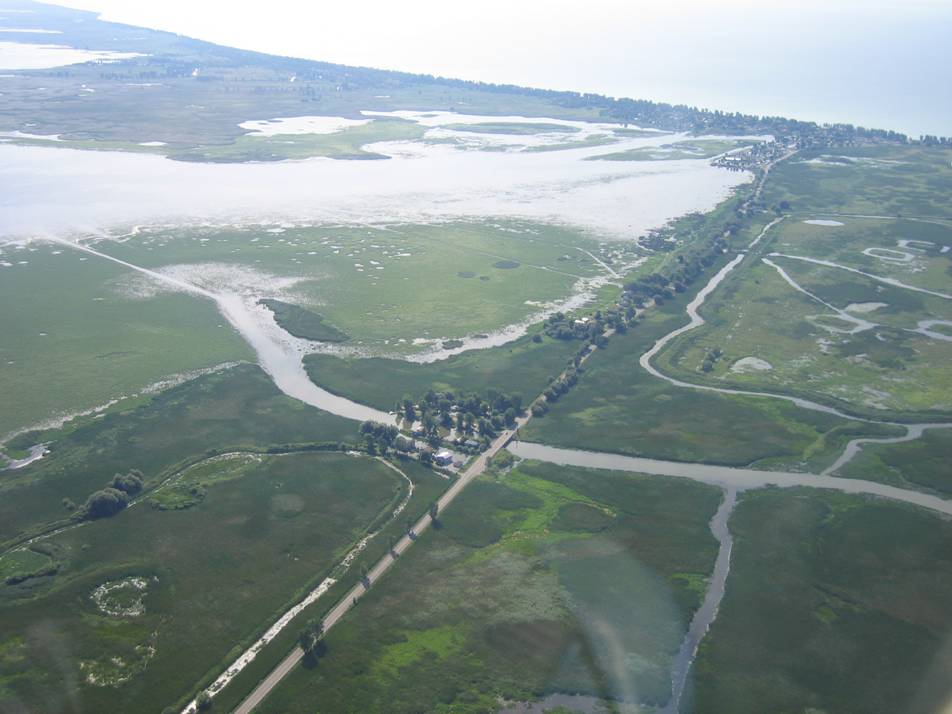Long Point, Ontario
Long Point Road, Port Rowan, Ontario, N0E 1M0, Canada
The Long Point community is located at the base of the world’s longest fresh water sandspit on Lake Erie in Ontario, Canada. It is a seasonal community of about 400 cottages with a few full-time residents. The community depends on the nearby village of Port Rowan for most goods and services. The coastal wetlands bordering Long Point Bay are rich in biodiversity and important to numerous migratory bird populations. Long Point was designated as a United Nations World Biosphere Reserves in 1986.
Top environmental challenge faced by the community (currently or in the past 10 years):
Long Point is located in the most biodiverse regions in Canada and is home to many rare species of plants and animals. Six of the eight species of turtles in Ontario, all but one of them endangered, are found in Long Point. Until recently, the 3.6 kilometer causeway linking Long Point to the nearby mainland village of Port Rowan by a 3.6 kilometer causeway that was once rated as the fourth deadliest for turtles in North America.
How the environmental challenge has affected local livelihoods:
The Causeway is regarded as the gateway to Long Point community and by association to the Long Point World Biopshere Reserve. The area's beaches, marshes, marinas, provincial parks and other tourism facilities bring tens of thousands of visitors each year. Both local cottagers and tourists would often encounter wildlife killed on the road as they entered Long Point... not the best first impression of the community's environmental stewardship.
Community response to the challenge, through environmental stewardship (conservation) initiatives that improve environmental well-being and support sustainable livelihoods:
Beginning in 2006, the local community banded together to tackle the environmental challenge of reptile road mortality on the Causeway and the related problem of adjacent marsh habitat degradation caused by the road's construction. Specically, the effort sought to restore historical aquatic connections between the Big Creek National Wildlife area to the west of the Causeway with Long Point Bay to the east.
The extent to which the response was successful or otherwise:
Between 2006 and 2016, more than $2.7 million was raised to install more than six kilometers of wildlife exclusion fencing and 12 wildlife culverts along the Causeway. The fencing keeps wildlife from venturing onto the road while the culverts provide safe passage under the road as the animals moved between the marsh and lakeshore habitats. Reptile road mortality monitoring, based on earlier surveys by the Canadian Wildlife Service, was conducted annually to measure the project's effectiveness. By the time the last culverts were installed in 2016, road mortality of turtles had decreased by 89 per cent. Public awareness and education also contributed to this success and it is now not uncommon to see a line of cars stopped to wait as a driver helps a turtle cross the road. Three of the installed culverts were large and deep enough to restore the aquatic links between Big Creek Marsh and Long Point Bay. While it is still too early to judge the impact on wetland habitat restoration, the passage of fish through these culverts indicates their success in providing access to new spawning habitat.
Extent to which governmental policy (at local, regional or national levels, as relevant) has supported, or been contrary to, the community's responses to the environmental challenge:
Most of the funding for the project came from federal and provincial programs to protect and restore Species at Risk populations. Funding for the habitat restoration was also received from the US Fish and Wildlife Foundation through its Sustain Our Great Lakes program that generously allocates funds for projects on the Canadian side of the Great Lakes.
Keywords: Ecosystem
Freshwater
Keywords: Resources
Air, Wildlife
Keywords: Big Issues
Biodiversity
Keywords: Solutions
Ecological Restoration
Contributed by: Long Point World Biosphere Reserve Foundation
The information provided and opinions expressed above are the responsibility of the contributor and do not necessarily reflect the views and analysis of the Community Conservation Research Network (CCRN), nor those of all members of the community described.
For any questions or comments on Communities in Action, please contact us
here.



